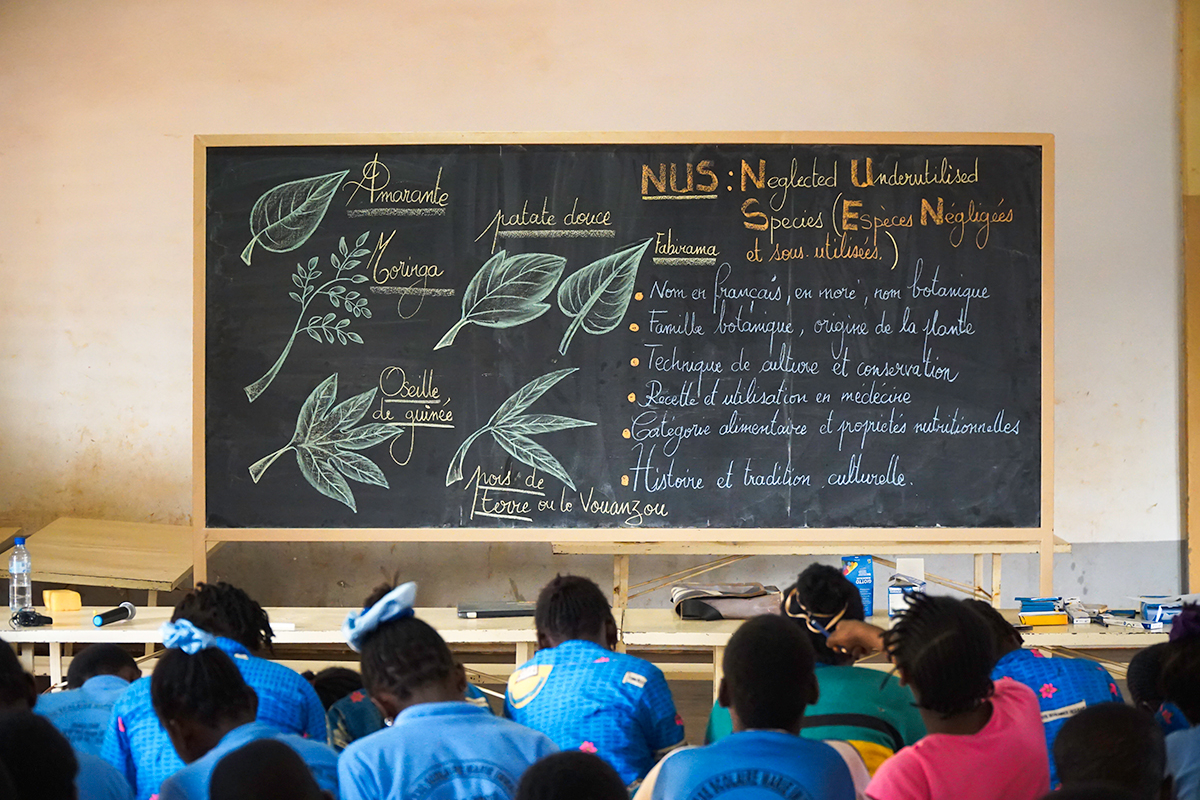
Neglected No More: Why Climate-Smart Underutilized Foods Belong on School Meal Menus
Blog by Sharon Mendonce, Alliance of Bioversity International and CIAT Research Fellow, Teresa Borelli, Alliance of Bioversity International and CIAT Scientist, Danny Hunter, Alliance of Bioversity International and CIAT Principal Scientist and Research Lead for the Pacific School Food Network, Francis Mwanza, GCNF Senior Advisor for Heritage Crops, Emily Fredenberg, GCNF Senior Program Officer, and Jenna Perry, PhD Candidate, University of the Sunshine Coast.
No matter what’s on the menu, whether it’s rice with a side of grilled fish, ugali topped with sautéed kale or pasta in a tomato sauce, one fact holds true: school meals deliver far-reaching benefits. Beyond supporting child health, nutrition, and education, school meals have the potential to drive countries toward more sustainable, climate-resilient, and inclusive food systems.

The EU-funded SUSTLIVES project piloted the first school-based training module on local neglected and underutilized species (NUS) at the Association Watinoma school in Koubri. Photo credit: Bioversity/Hyacinthe Combary.
“Do you know what this is?” asks a teacher pointing to a large green leaf sketched in chalk on the blackboard. Beside it, the word amaranth is written. Sixty curious 10–12-year-olds at the Marie Immaculée School Complex in Ouagadougou, Burkina Faso, stare blankly. Then comes the reveal: “It’s Bolombourou!”
The room erupts in laughter; they recognize it instantly once the teacher uses its name in Mooré (the local language). Many of them have likely consumed it at home, in stews, salads, or simply steamed. While amaranth has traditionally been foraged in Burkina Faso, it is now increasingly cultivated by families and smallholder farmers, often in home gardens. It is also commonly used as an ornamental plant in parks, residential areas, and public spaces.
What surprises the students, however, is that this familiar plant belongs to a category known as neglected and underutilized species (NUS): a large, biodiverse group of domesticated, semi-domesticated and wild food species which are marginalized, if not entirely ignored, by researchers, breeders and policy makers. Although often overlooked, plants classified as NUS are often nutrient-rich, culturally significant and have long been part of local diets.
NUS are also notably resilient, requiring less water and fewer chemical inputs compared to many modern and more commonly grown crop varieties. Further, NUS such as amaranth, cowpeas, sorghum, Bambara groundnuts, finger millet and fonio play a key role in soil health. These plants enhance soil fertility, reduce erosion, and are capable of growing even in challenging conditions such as extreme heat, drought, and poor-quality soils. Their deep roots, nitrogen-fixing ability, and ground-cover properties make them ideal for sustainable farming and restoring degraded land.
NUS are found across the globe: millets from the Poaceae family grow in western India, short pitpit (Setaria palmifolia) thrives in the highlands of Papua New Guinea, and camu-camu (Myrciaria dubia), a tart little fruit, is foraged from the Amazon rainforest in Peru and Brazil. Although the term NUS encompasses a wide range of species with diverse local names and uses, what unites them is their largely untapped potential. In addition to fortified and biofortified crops and staple foods, NUS are increasingly recognized as climate-smart, nutritious foods.
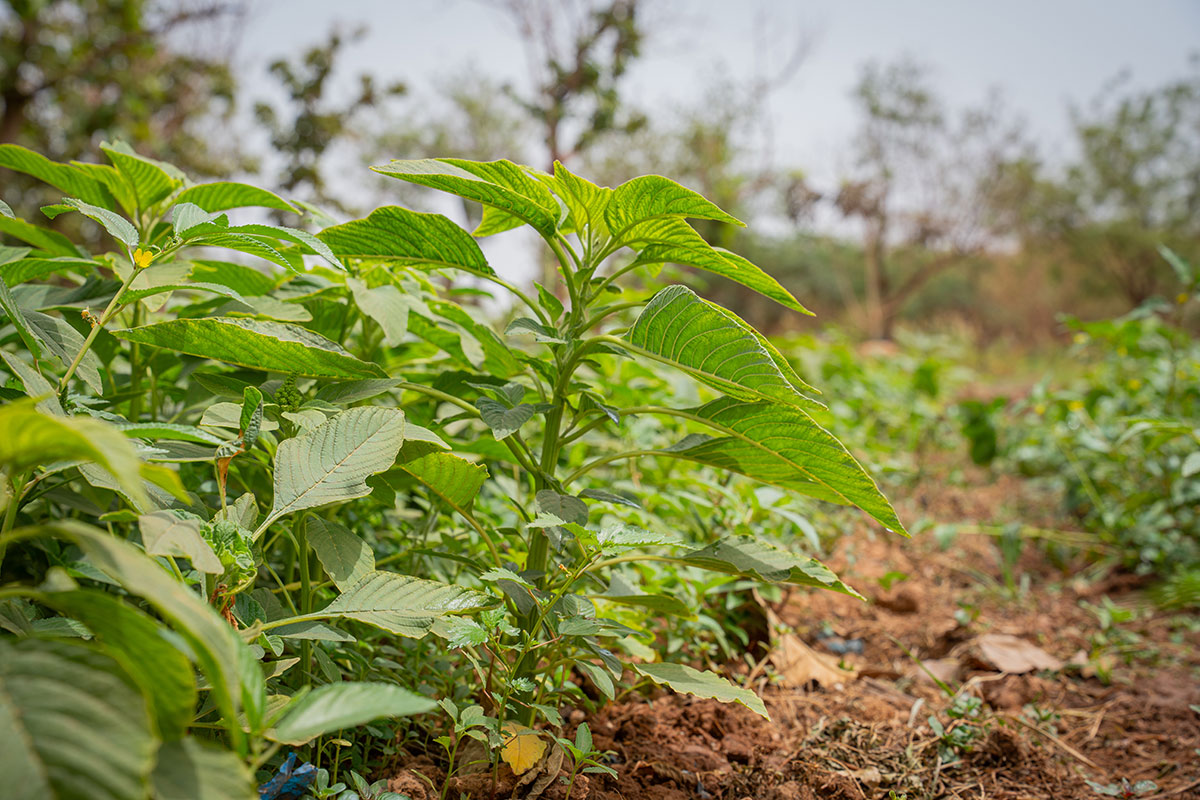
The NUS prioritized under the SUSTLIVES project include moringa (Moringa oleifera), roselle (Hibiscus sabdariffa) and amaranth (Amaranthus spp., pictured), amongst others. Photo credit: AICS Ouagadougou/ A. C. Bello.
Why prioritize climate-smart, nutritious foods in school meal programs?
School meal programs are both impacted by climate change and can contribute to it. Rising food prices, extreme weather events and other supply chain disruptions are making it harder for schools to procure and serve nutritious meals. At the same time, long-distance food transport and solely procuring conventionally farmed food (though consistent and dependable) are often environmentally harmful and major contributors to greenhouse gas emissions.
School meals also play a vital role in addressing all three forms of malnutrition: undernutrition, micronutrient deficiencies, and overweight or obesity. Well-designed, nutritious meals not only provide essential calories and nutrients to combat undernutrition but also help establish healthy eating habits that last into adulthood.
The 2024 Global Survey of School Meal Programs found that 92% of programs prioritized nutritional and/or health goals, with consistent focus across income levels and regions. However, only 38% of programs reported intentionally including foods considered “climate-friendly,” revealing a notable gap and opportunity. Given the large amount of food they procure, school meal programs—and the guidelines and policies that shape them—represent a powerful lever to create demand for foods that are good for both people and the planet.
Navigating challenges with effective solutions
Incorporating climate-smart, nutritious foods into school meals isn’t without obstacles, but some countries are proving it can be done with the right policies and innovations in place.
One of the key challenges in incorporating locally sourced foods, including NUS, into school meals is maintaining a steady supply of these ingredients. This is especially difficult for schools that depend on food contributions from parents, as the schools have little control over what items can be requested or consistently provided. In Northeast India, the ‘Linking Schools to Agrobiodiversity’ project, led by North East Society for Agroecology Support (NESFAS) and funded by the Indigenous Partnership for Agrobiodiversity and Food Sovereignty (TIP), addresses this challenge by fostering collaboration between the local community and schools. Farmers, parents, teachers, and school cooks work together to prioritize local food plants for school meals, create seasonal availability calendars, and develop community-driven procurement guidelines. Together, these tools make it easier to plan menus and procure year-round diverse, nutritious ingredients that include wild edibles and locally grown crops cultivated using sustainable agroecological practices.
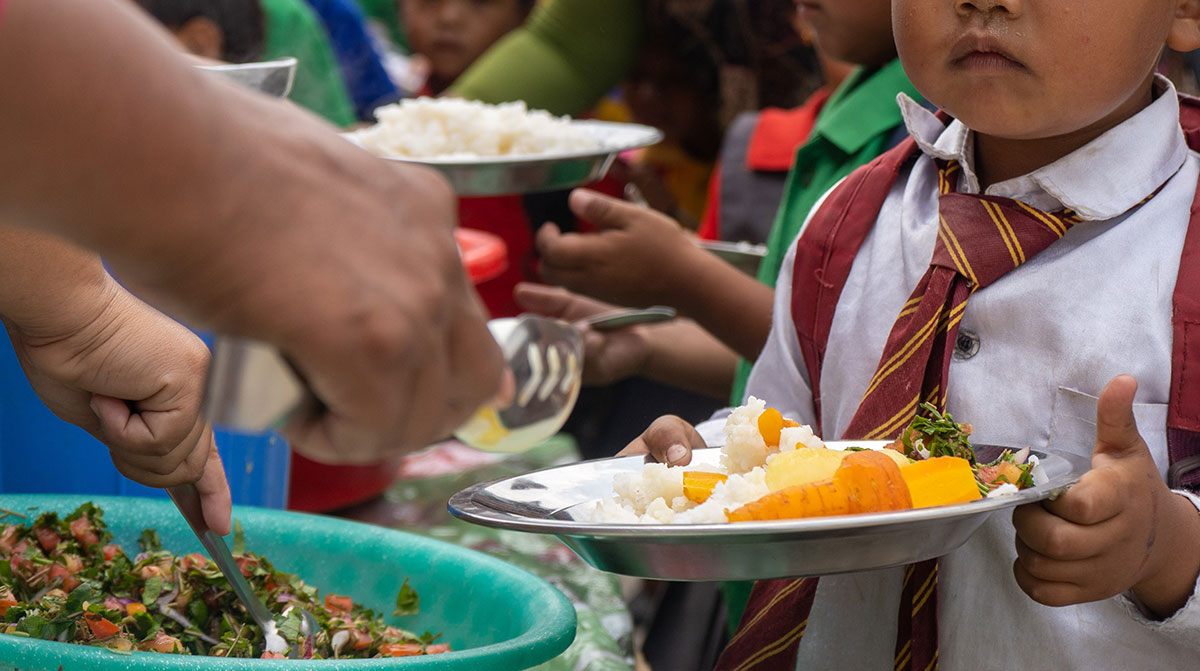
Students of Khliehumstem Presbyterian Lower Primary and Upper Primary School collect their freshly prepared school meals. Photo credit: NESFAS/ Banteilang Syiem
Smallholder farmers supplying schools often face limited access to quality NUS seed stock, hindering their ability to provide a steady supply of these species. In many countries, seed policy and regulations focus narrowly on the production, certification, and trade of commercial seeds, limiting the availability of traditional and farmer-saved seed varieties—many of which are NUS. While these frameworks aim to ensure seed quality and national food security, they often exclude traditional and community-based seed systems from legal recognition and protection. Establishing a dual system that recognizes both certified seeds and traditional varieties, could enhance the cultivation and commercial potential of NUS, strengthen supply chains for home-grown school feeding programs (which are designed to provide children in schools with safe, diverse and nutritious food, sourced locally from smallholder farmers) and contribute to broader food system resilience.
In Zambia, much of the available seeds for NUS come from smallholder farmers, community seed banks and individuals collecting seeds to preserve them. Francis Mwanza, Senior Advisor for Heritage Crops for the Global Child Nutrition Foundation (GCNF) and founder of the “Mwinimunda (Guardian of the Garden) Heritage Homestead Project” in Lusaka, Zambia, strives to increase the availability of quality seeds for traditional varieties and introduce them to the younger generations through school meal programs. “In the future, the project aims to provide seed packets to school children visiting Mwinimunda for planting in school gardens and at home,” Francis explained.
Another major challenge for schools is the lack of dedicated funding to support the purchase of climate-smart, nutritious foods. In fact, a closer look at climate finance flows and national climate strategies reveals a striking gap: school feeding is rarely mentioned, and when it is, it’s often sidelined. One of the biggest obstacles to making school meals part of the climate solution is their lack of presence in policy. To address this, Brazil has taken pioneering steps by passing Sociobiodiversity Ordinance 284, the first policy to officially recognize 100 nutritionally important native species. This groundbreaking move has facilitated the inclusion of these species (many of them NUS) in institutional procurement, school feeding programs, and national food-based dietary guidelines.
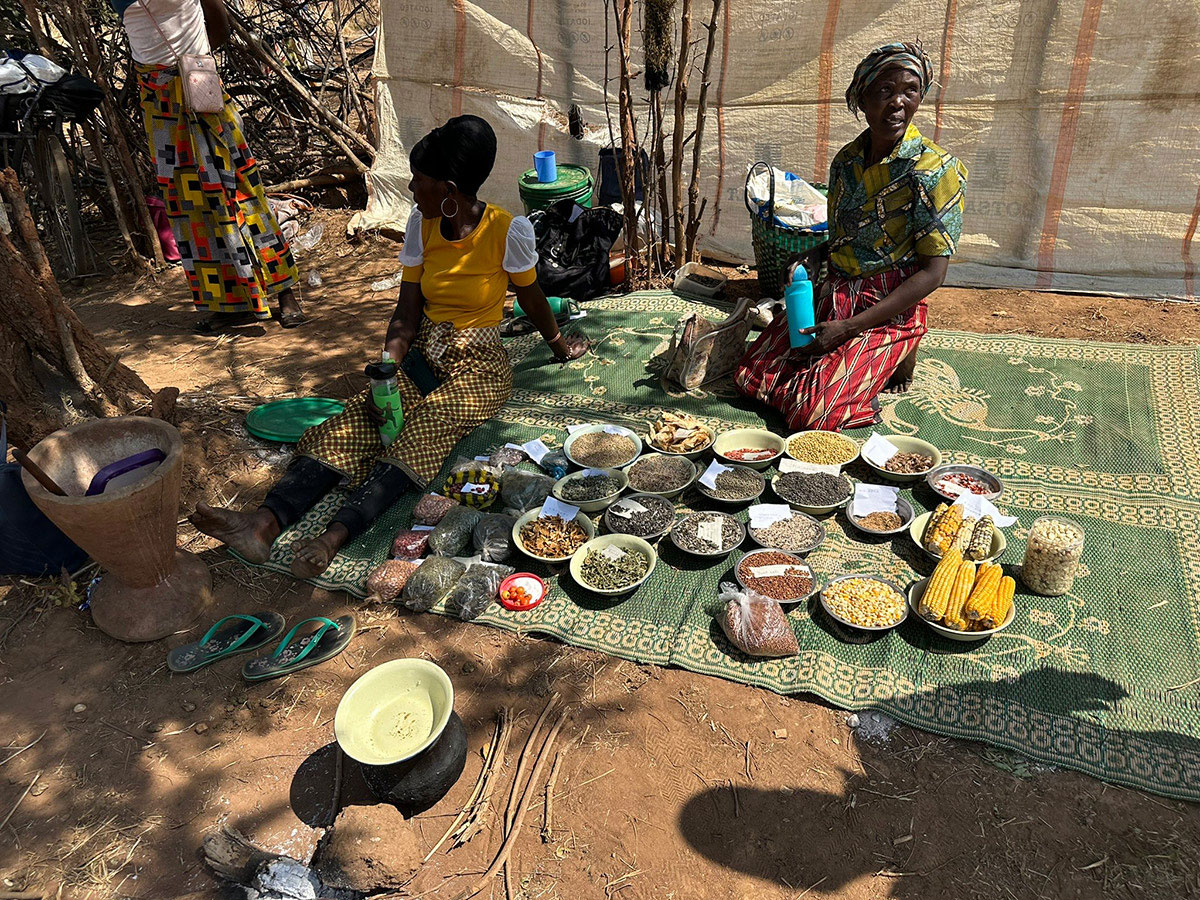
Community seed bank members displaying their local seed varieties in Mumbwa; suppliers of local seeds for “Mwinimunda Heritage Homestead Project” in Lusaka, Zambia. Photo Credit: Francis Mwanza.
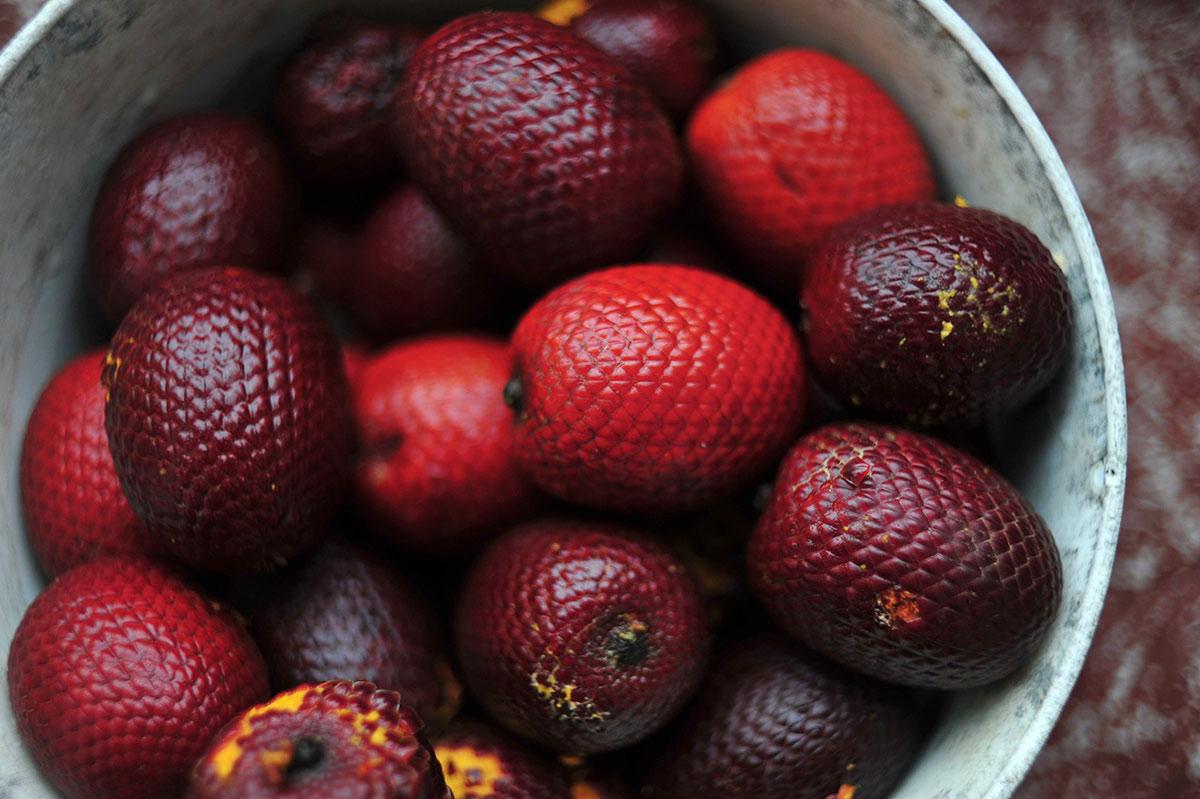
The Biodiversity for Food and Nutrition (BFN) project promoted the production and consumption of NUS by strengthening evidence, shaping policies, and raising awareness. One such species, Buriti (Mauritia flexuosa), was highlighted for its nutrient-rich pulp, which is rich in antioxidants, healthy fats such as oleic acids and beta carotene (a precursor of vitamin A). Photo credit: CIAT/Neil Palmer.
Finally, a lack of data and evidence remains a significant barrier to developing context-specific solutions that enable the use of climate-smart, nutritious foods. For example, the Pacific Islands have substantial natural resources and rich biodiversity, much of which is uniquely valuable for both nutrition and climate resilience; however, the region remains highly vulnerable to the impacts of climate change and natural disasters.This underscores the urgent need for tailored strategies that support the transition to more sustainable and resilient agrifood systems. Programs based on ‘home-grown’ approaches can facilitate this transition by transforming local food systems, enhancing climate resilience, and generating sustainable income for smallholders.
To date, there has been limited research to guide governments and programs in the Pacific Islands on the best ways to implement ‘home-grown’ approaches.This gap led to the creation of the Pacific School Food Network. Jenna Perry, a PhD candidate at the Australian Centre for Pacific Islands Research at the University of the Sunshine Coast, is advancing the network’s mission through her research on school meal programs in the region. She is mapping existing and potential climate change adaptation and mitigation strategies within these programs, while identifying opportunities to integrate environmental sustainability and nutrition goals. NUS are expected to play a key role in this effort.
Call to Action from Global School Meal Program Leaders
Scaling up the inclusion of culturally relevant, climate-smart and nutritious foods in school meal programs was high on the agenda of the 2024 Global Child Nutrition Forum in Osaka, Japan, where these foods were recognized as an important lever for food system transformation. The biannual Forum, organized by the Global Child Nutrition Foundation (GCNF) unites school meal practitioners and advocates from government, the private sector, international organizations, NGOs, and academic institutions to share knowledge and strategies for improving school feeding and child nutrition worldwide.
Each Forum develops a communiqué, serving as a rallying point for school meal program advocacy and policy around the world. Participants in the 2024 Forum urged school meal programs across the globe to begin prioritizing NUS. To encourage greater uptake among children, leaders recommended incorporating local and traditional cuisine into school meal menus and integrating NUS into nutrition education—particularly through hands-on learning in school gardens. This approach aims to foster students’ appreciation and appetite for NUS and traditional foods. Further, to ensure a sustainable supply of these species, national school meal programs were also encouraged to systematically engage smallholder farmers through ‘home-grown’ approaches.
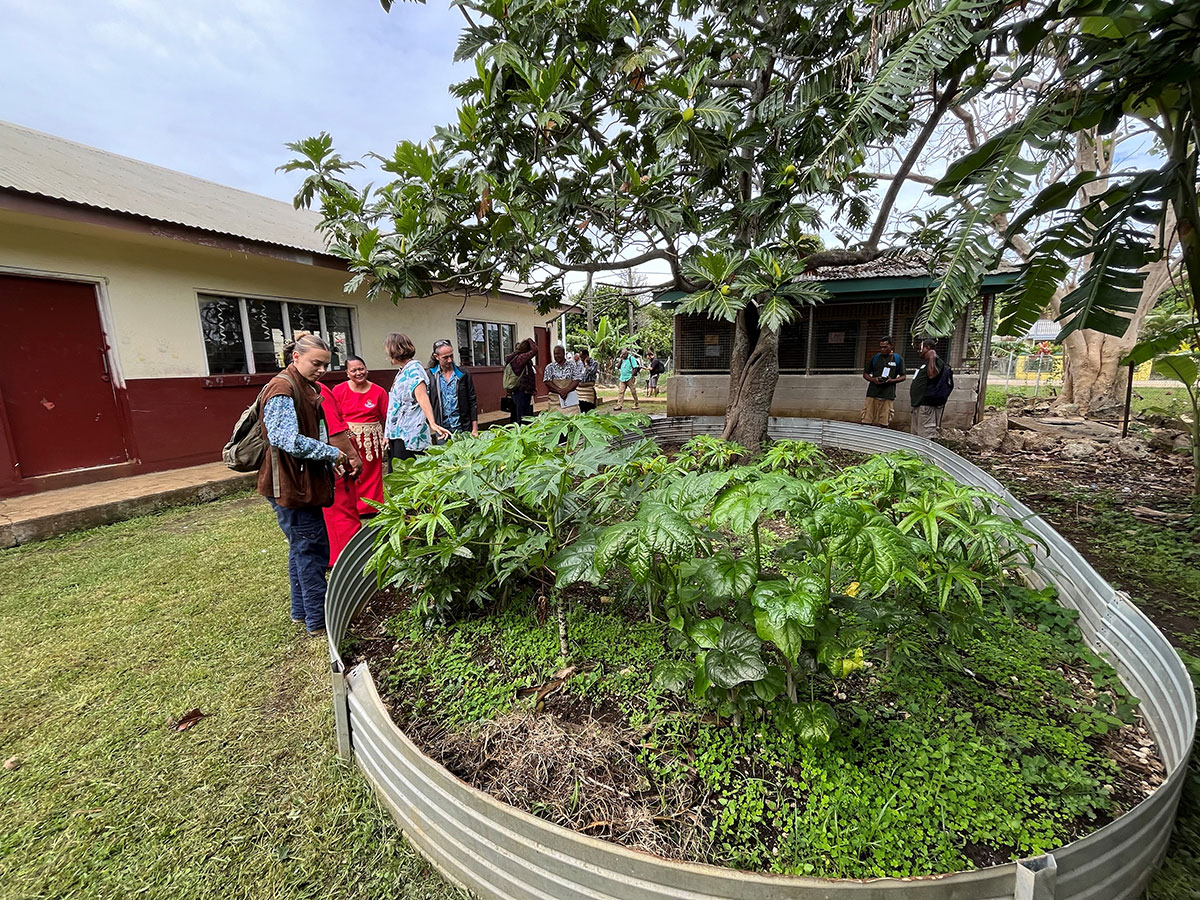
Breadfruit (Artocarpus altilis) and abika (bele) (Abelmoschus manihot) grown within a school setting in Tonga. Both are nutrient-rich, climate-resilient Pacific crops with unique genetic diversity, supporting food security in the region. Photo credit: Bioversity/Danny Hunter.
Conclusion
As schools navigate the challenges of climate change and nutrition security, the opportunity to integrate NUS into meal programs becomes increasingly vital. These climate-smart, nutrient-rich foods not only enhance dietary diversity and improve child health but also support smallholder farmers and contribute to sustainable food systems.
However, successfully incorporating these foods into school meal programs requires overcoming key obstacles. Limited access to high-quality seeds, gaps in nutrition data on these species, logistical hurdles in procurement, and a lack of supportive policies all pose significant barriers. Strengthening research efforts and improving policy frameworks are essential to ensuring these foods are available, accessible, and effectively integrated into school meals.
By prioritizing culturally relevant NUS, school meal programs can serve as powerful drivers of food system transformation—promoting resilience, biodiversity, and healthy eating habits that last a lifetime. The call is clear: it’s time for policymakers, educators, and communities to embrace innovative approaches that make school meals better for children, better for farmers, and better for the planet.
About the Authors:
Sharon Mendonce is a Research Associate at the Alliance of Bioversity International and CIAT. She supports research aimed at conserving and promoting neglected and underutilized species, particularly through school meal programs. Sharon is also passionate about science communication and facilitates the Alliance’s engagement with global partnerships, including the School Meals Coalition.
Teresa Borelli, is a Scientist with the Alliance of Bioversity International and CIAT. With over 20 years in the CGIAR system, she advances sustainable agri-food systems in low- and middle-income countries. Her work bridges agrobiodiversity, agroforestry, soil biology and crop wild relatives with food security and policy. She brings a passion for translating science into real-world impact.
Danny Hunter is a Principal Scientist with the Alliance of Bioversity International and CIAT. He is also the Research Lead for the Pacific School Food Network and is Adjunct Professor, Planet Friendly School Meals, at the Australian Centre for Pacific Islands Research, University of the Sunshine Coast, Australia.
Francis Mwanza is a Senior Advisor for Heritage Crops at the Global Child Nutrition Foundation (GCNF) and founder of the “Mwinimunda (Guardian of the Garden) Heritage Homestead Project” in Lusaka, Zambia, which strives to increase the availability of quality seeds for traditional varieties and introduce them to the younger generations through school meals. He formerly headed the UN World Food Programme (WFP)’s London office.
Emily Fredenberg is a Senior Program Officer at the Global Child Nutrition Foundation (GCNF) and brings more than a decade of experience in global food security and nutrition. At GCNF, Emily drives the organization’s external voice, facilitates engagement with partners, and serves as a key architect of the organization’s collaborative approach to advancing sustainable school meal programs worldwide.
Jenna Perry is a PhD Candidate at the University of the Sunshine Coast, Australia, exploring climate friendly school meals with Pacific Island communities. Jenna is a Graduate Accredited Practising Dietitian with a passion for Aboriginal and Torres Strait Islander health and also works as a Community Outreach Dietitian with the Institute for Urban Indigenous Health, Australia.

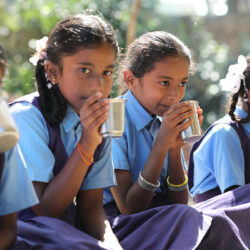
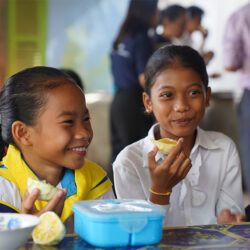

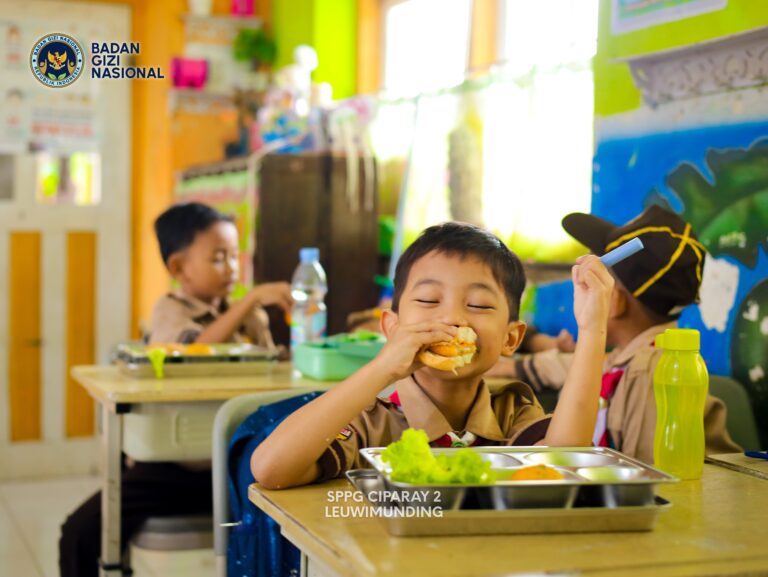

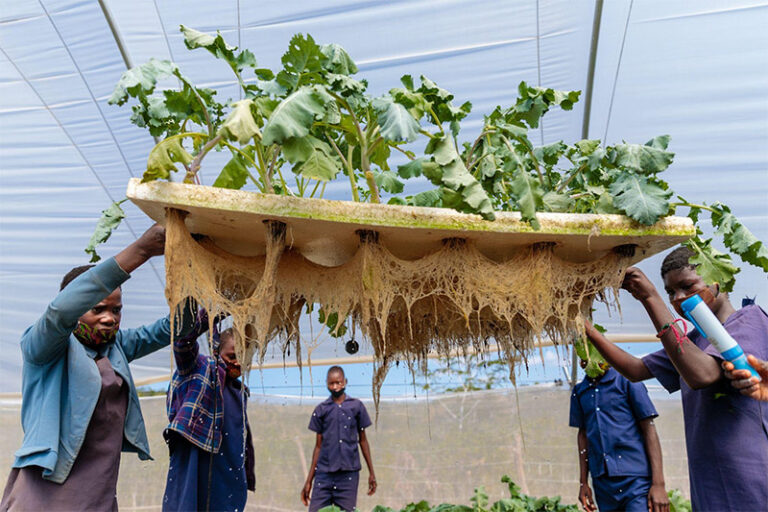
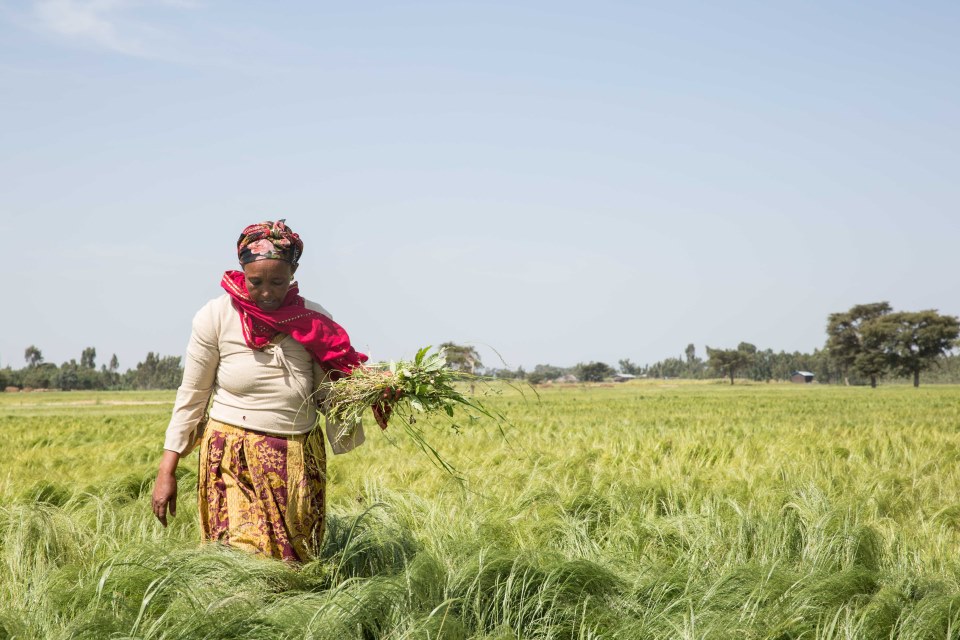
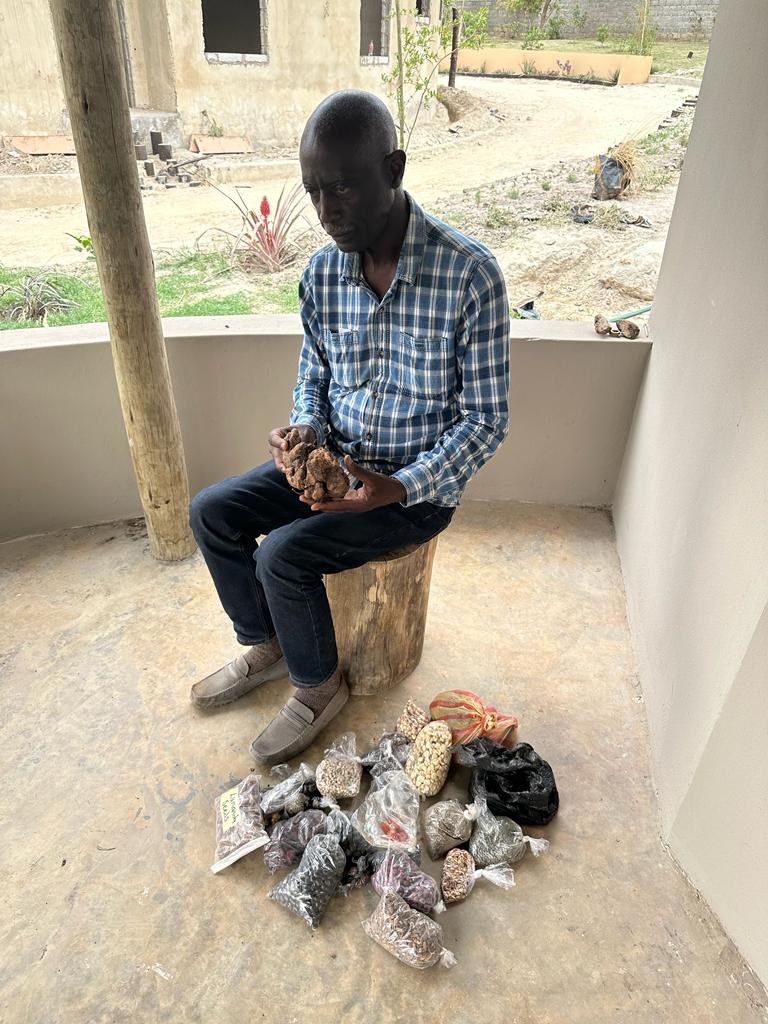
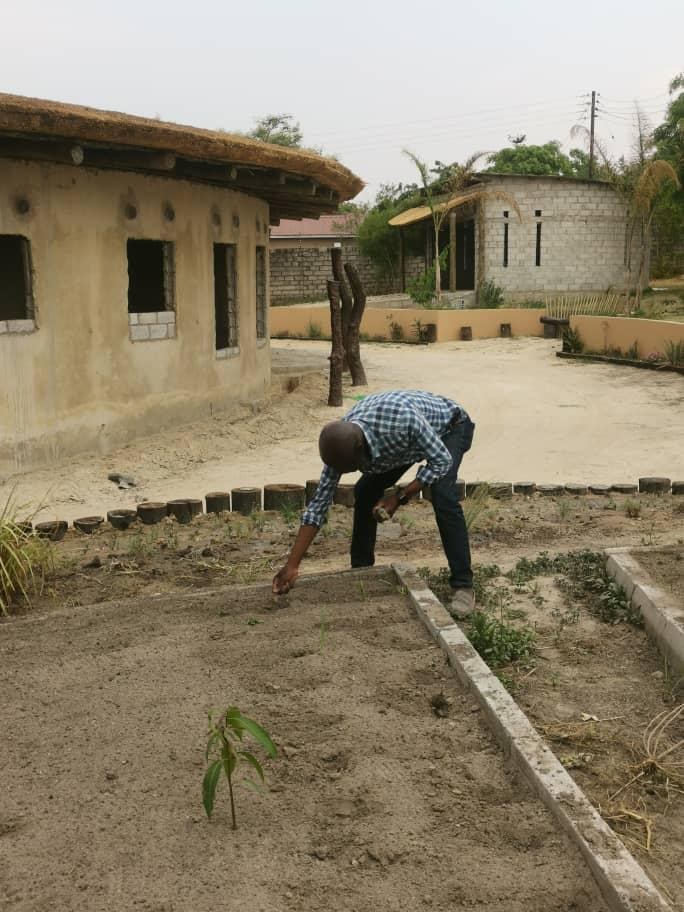
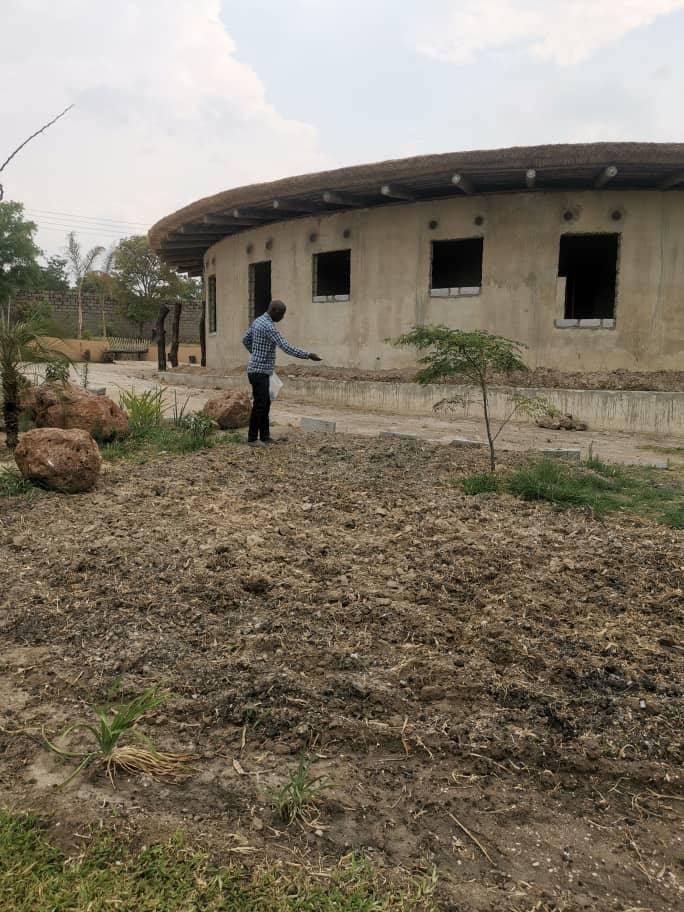
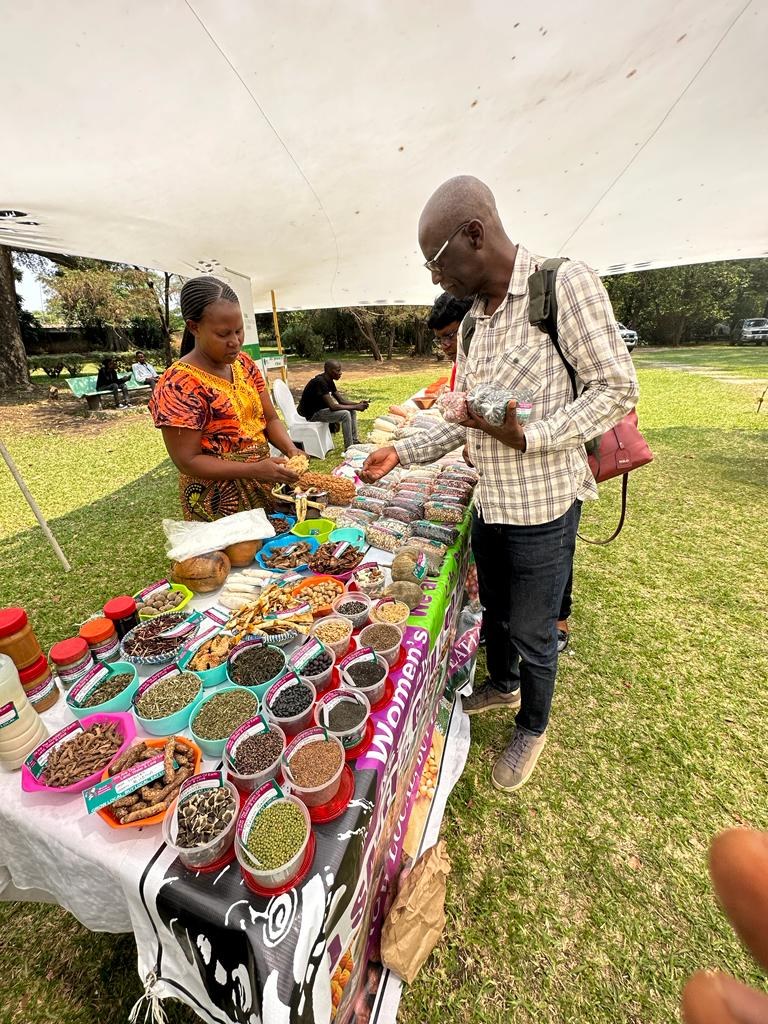
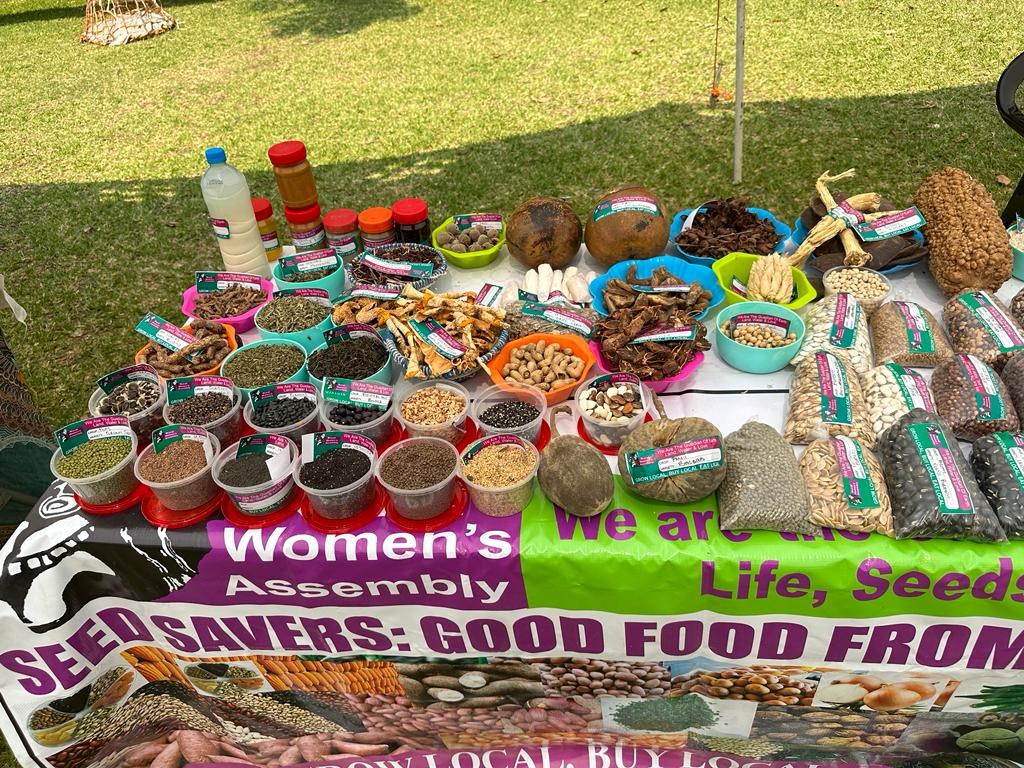
No comment yet, add your voice below!